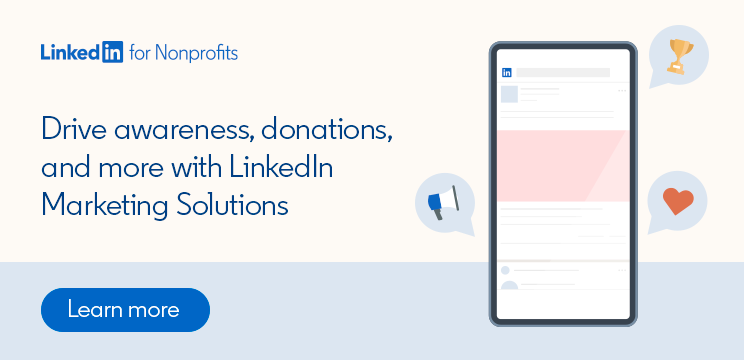
How to Make Your Nonprofit Storytelling Resonate
Your nonprofit has so many stories to tell. Whether it’s a heartfelt reflection from a recent event, a look back into your organization’s history, or an anecdote from a dedicated volunteer, these storytelling moments form an illustrative nonprofit narrative about the cause-driven work your team does every day.
When shared with intentionality and finesse, your organization’s larger story is one of the best tools you and your team have to help build brand recognition, reach potential donors, recruit employees and volunteers, and ultimately move your mission forward.
So, how can you and your team build nonprofit storytelling skills and unlock the potential of your organization's impactful narrative? Here’s what you need to know:
Nonprofit storytelling: 4 keys to breaking through
To figure out your nonprofit’s best storytelling approach and resonate with all the people you’re trying to reach, try following these four tips:
Tip 1: Lead with impact messaging.
Research by Classy shows that recurring nonprofit donors receive several emotional benefits – like gratitude, feeling a part of a greater solution, and boosted self-esteem – by supporting their favorite causes. Nonprofits can help build this emotional connection among current and future supporters through storytelling by infusing impact messaging in all public-facing materials they create, from newsletters to emails. When developing content, try answering the following questions with your messaging:
How does this relate to our organization’s mission and goals?
Why is achieving this result important for our donors?
Why should donors care about the impact of this on our organization?
For example, when drafting posts for your organization’s LinkedIn page, consider creating content about programs or initiatives that were made possible by generous donors. In your content messaging, make sure to highlight the positive impact those donations had on supporting your cause and overall mission.
Tip 2: Understand your audience.
Whenever you communicate as a nonprofit brand, start by critically considering who your target audience is: What are their interests? What are their dislikes? What types of content do they like the most? What about our nonprofit’s story resonates the most with them?
A good way to discover what types of stories and content resonate with your supporter base – at least on LinkedIn – is by reviewing your highest performing content. You can search for trends in your nonprofit’s Company Page analytics. Here, you can uncover what topics your audience finds especially engaging and plan future content about your nonprofit around these insights. For example, if you discover your audience particularly likes to hear about volunteers, consider developing a content series centered on the personal stories of your volunteer cohort.
You can even take your nonprofit content a step further by reaching new supporters via LinkedIn Sponsored Content. With this tool, you can connect with a highly engaged audience in the newsfeed with LinkedIn ads and tailor your marketing campaigns to meet your nonprofits specific goals. Plus, you can track and measure your results all in one place.
Tip 3: Make people the center of your nonprofit storytelling.
The most memorable stories tend to be the most personal. This is true in nonprofit storytelling, too. Your audience will likely connect more deeply with content that centers on stories about employees, your volunteers, or the people you serve. Whenever possible, make people and their impact the central focus of your nonprofit storytelling.
For example, if you host a nonprofit event where you’re interacting with the community you serve, try interviewing your guests. Ask them why they’re using your nonprofit’s services and what kind of difference it’s making in their lives. After getting their permission, you can turn this interview into an impact-first, person-first piece of content that will likely deeply resonate with your supporter base.
Invite your employees and volunteers to participate in storytelling, too. Encourage your staff to post stories, photos, and videos, sharing about their positive experiences working or volunteering for your nonprofit. You can even feature some of these stories on your organization's LinkedIn Career Page to help attract potential new talent for your nonprofit.
Tip 4: Be consistent.
Your nonprofit’s story will naturally take time to reach and resonate with your audience. One of the best ways you can help this process along is to tell your nonprofit story as consistently and frequently as possible. Think of every engagement with your audience as a potential storytelling opportunity!
To help guide your regular storytelling, choose a few concrete and specific messaging points. Bring everything you do back to the story of what you do, why you do it, and why it matters as routinely as possible. A clear narrative will emerge that can compel your audience to keep following and supporting into the next chapter.
For more tips on how to tell your nonprofit’s story, subscribe to the LinkedIn for Nonprofits blog.

